- Home
- William Shakespeare
As You Like It (Folger Shakespeare Library) Page 18
As You Like It (Folger Shakespeare Library) Read online
Page 18
The next four years were the golden period in Shakespeare's career, though overshadowed by the death of his only son, Hamnet, aged eleven, in 1596. In his early thirties and in full command of both his poetic and his theatrical medium, he perfected his art of comedy, while also developing his tragic and historical writing in new ways. In 1598, Francis Meres, a Cambridge University graduate with his finger on the pulse of the London literary world, praised Shakespeare for his excellence across the genres:
As Plautus and Seneca are accounted the best for comedy and tragedy among the Latins, so Shakespeare among the English is the most excellent in both kinds for the stage; for comedy, witness his Gentlemen of Verona, his Errors, his Love Labours Lost, his Love Labours Won, his Midsummer Night Dream and his Merchant of Venice: for tragedy his Richard the 2, Richard the 3, Henry the 4, King John, Titus Andronicus and his Romeo and Juliet.
For Meres, as for the many writers who praised the "honey-flowing vein" of Venus and Adonis and Lucrece, narrative poems written when the theaters were closed due to plague in 1593-94, Shakespeare was marked above all by his linguistic skill, by the gift of turning elegant poetic phrases.
PLAYHOUSES
Elizabethan playhouses were "thrust" or "one-room" theaters. To understand Shakespeare's original theatrical life, we have to forget about the indoor theater of later times, with its proscenium arch and curtain that would be opened at the beginning and closed at the end of each act. In the proscenium arch theater, stage and auditorium are effectively two separate rooms: the audience looks from one world into another as if through the imaginary "fourth wall" framed by the proscenium. The picture-frame stage, together with the elaborate scenic effects and backdrops beyond it, created the illusion of a self-contained world--especially once nineteenth-century developments in the control of artificial lighting meant that the auditorium could be darkened and the spectators made to focus on the lighted stage. Shakespeare, by contrast, wrote for a bare platform stage with a standing audience gathered around it in a courtyard in full daylight. The audience were always conscious of themselves and their fellow spectators, and they shared the same "room" as the actors. A sense of immediate presence and the creation of rapport with the audience were all-important. The actor could not afford to imagine he was in a closed world, with silent witnesses dutifully observing him from the darkness.
Shakespeare's theatrical career began at the Rose Theatre in Southwark. The stage was wide and shallow, trapezoid in shape, like a lozenge. This design had a great deal of potential for the theatrical equivalent of cinematic split-screen effects, whereby one group of characters would enter at the door at one end of the tiring-house wall at the back of the stage and another group through the door at the other end, thus creating two rival tableaux. Many of the battle-heavy and faction-filled plays that premiered at the Rose have scenes of just this sort.
At the rear of the Rose stage, there were three capacious exits, each over ten feet wide. Unfortunately, the very limited excavation of a fragmentary portion of the original Globe site, in 1989, revealed nothing about the stage. The first Globe was built in 1599 with similar proportions to those of another theater, the Fortune, albeit that the former was polygonal and looked circular, whereas the latter was rectangular. The building contract for the Fortune survives and allows us to infer that the stage of the Globe was probably substantially wider than it was deep (perhaps forty-three feet wide and twenty-seven feet deep). It may well have been tapered at the front, like that of the Rose.
The capacity of the Globe was said to have been enormous, perhaps in excess of three thousand. It has been conjectured that about eight hundred people may have stood in the yard, with two thousand or more in the three layers of covered galleries. The other "public" playhouses were also of large capacity, whereas the indoor Blackfriars theater that Shakespeare's company began using in 1608--the former refectory of a monastery--had overall internal dimensions of a mere forty-six by sixty feet. It would have made for a much more intimate theatrical experience and had a much smaller capacity, probably of about six hundred people. Since they paid at least sixpence a head, the Blackfriars attracted a more select or "private" audience. The atmosphere would have been closer to that of an indoor performance before the court in the Whitehall Palace or at Richmond. That Shakespeare always wrote for indoor production at court as well as outdoor performance in the public theater should make us cautious about inferring, as some scholars have, that the opportunity provided by the intimacy of the Blackfriars led to a significant change toward a "chamber" style in his last plays--which, besides, were performed at both the Globe and the Blackfriars. After the occupation of the Blackfriars a five-act structure seems to have become more important to Shakespeare. That was because of artificial lighting: there were musical interludes between the acts, while the candles were trimmed and replaced. Again, though, something similar must have been necessary for indoor court performances throughout his career.
Front of house there were the "gatherers" who collected the money from audience members: a penny to stand in the open-air yard, another penny for a place in the covered galleries, sixpence for the prominent "lord's rooms" to the side of the stage. In the indoor "private" theaters, gallants from the audience who fancied making themselves part of the spectacle sat on stools on the edge of the stage itself. Scholars debate as to how widespread this practice was in public theaters such as the Globe. Once the audience were in place and the money counted, the gatherers were available to be extras onstage. That is one reason why battles and crowd scenes often come later rather than early in Shakespeare's plays. There was no formal prohibition upon performance by women, and there certainly were women among the gatherers, so it is not beyond the bounds of possibility that female crowd members were played by females.
The play began at two o'clock in the afternoon and the theater had to be cleared by five. After the main show, there would be a jig--which consisted not only of dancing, but also of knockabout comedy (it is the origin of the farcical "afterpiece" in the eighteenth-century theater). So the time available for a Shakespeare play was about two and a half hours, somewhere between the "two hours' traffic" mentioned in the prologue to Romeo and Juliet and the "three hours' spectacle" referred to in the preface to the 1647 Folio of Beaumont and Fletcher's plays. The prologue to a play by Thomas Middleton refers to a thousand lines as "one hour's words," so the likelihood is that about two and a half thousand, or a maximum of three thousand lines made up the performed text. This is indeed the length of most of Shakespeare's comedies, whereas many of his tragedies and histories are much longer, raising the possibility that he wrote full scripts, possibly with eventual publication in mind, in the full knowledge that the stage version would be heavily cut. The short Quarto texts published in his lifetime--they used to be called "Bad" Quartos--provide fascinating evidence as to the kind of cutting that probably took place. So, for instance, the First Quarto of Hamlet neatly merges two occasions when Hamlet is overheard, the "Fishmonger" and the "nunnery" scenes.
The social composition of the audience was mixed. The poet Sir John Davies wrote of "A thousand townsmen, gentlemen and whores, / Porters and servingmen" who would "together throng" at the public playhouses. Though moralists associated female play-going with adultery and the sex trade, many perfectly respectable citizens' wives were regular attendees. Some, no doubt, resembled the modern groupie: a story attested in two different sources has one citizen's wife making a post-show assignation with Richard Burbage and ending up in bed with Shakespeare--supposedly eliciting from the latter the quip that William the Conqueror was before Richard III. Defenders of theater liked to say that by witnessing the comeuppance of villains on the stage, audience members would repent of their own wrongdoings, but the reality is that most people went to the theater then, as they do now, for entertainment more than moral edification. Besides, it would be foolish to suppose that audiences behaved in a homogeneous way: a pamphlet of the 1630s tells of how two men went to see Pericles
and one of them laughed while the other wept. Bishop John Hall complained that people went to church for the same reasons that they went to the theater: "for company, for custom, for recreation ... to feed his eyes or his ears ... or perhaps for sleep."
Men-about-town and clever young lawyers went to be seen as much as to see. In the modern popular imagination, shaped not least by Shakespeare in Love and the opening sequence of Laurence Olivier's Henry V film, the penny-paying groundlings stand in the yard hurling abuse or encouragement and hazelnuts or orange peel at the actors, while the sophisticates in the covered galleries appreciate Shakespeare's soaring poetry. The reality was probably the other way around. A "groundling" was a kind of fish, so the nickname suggests the penny audience standing below the level of the stage and gazing in silent open-mouthed wonder at the spectacle unfolding above them. The more difficult audience members, who kept up a running commentary of clever remarks on the performance and who occasionally got into quarrels with players, were the gallants. Like Hollywood movies in modern times, Elizabethan and Jacobean plays exercised a powerful influence on the fashion and behavior of the young. John Marston mocks the lawyers who would open their lips, perhaps to court a girl, and out would "flow / Naught but pure Juliet and Romeo."
THE ENSEMBLE AT WORK
In the absence of typewriters and photocopying machines, reading aloud would have been the means by which the company got to know a new play. The tradition of the playwright reading his complete script to the assembled company endured for generations. A copy would then have been taken to the Master of the Revels for licensing. The theater book-holder or prompter would then have copied the parts for distribution to the actors. A partbook consisted of the character's lines, with each speech preceded by the last three or four words of the speech before, the so-called "cue." These would have been taken away and studied or "conned." During this period of learning the parts, an actor might have had some one-to-one instruction, perhaps from the dramatist, perhaps from a senior actor who had played the same part before, and, in the case of an apprentice, from his master. A high percentage of Desdemona's lines occur in dialogue with Othello, of Lady Macbeth's with Macbeth, Cleopatra's with Antony, and Volumnia's with Coriolanus. The roles would almost certainly have been taken by the apprentice of the lead actor, usually Burbage, who delivers the majority of the cues. Given that apprentices lodged with their masters, there would have been ample opportunity for personal instruction, which may be what made it possible for young men to play such demanding parts.
9. Hypothetical reconstruction of the interior of an Elizabethan playhouse during a performance.
After the parts were learned, there may have been no more than a single rehearsal before the first performance. With six different plays to be put on every week, there was no time for more. Actors, then, would go into a show with a very limited sense of the whole. The notion of a collective rehearsal process that is itself a process of discovery for the actors is wholly modern and would have been incomprehensible to Shakespeare and his original ensemble. Given the number of parts an actor had to hold in his memory, the forgetting of lines was probably more frequent than in the modern theater. The book-holder was on hand to prompt.
Backstage personnel included the property man, the tire-man who oversaw the costumes, call boys, attendants, and the musicians, who might play at various times from the main stage, the rooms above and within the tiring-house. Scriptwriters sometimes made a nuisance of themselves backstage. There was often tension between the acting companies and the freelance playwrights from whom they purchased scripts: it was a smart move on the part of Shakespeare and the Lord Chamberlain's Men to bring the writing process in-house.
Scenery was limited, though sometimes set pieces were brought on (a bank of flowers, a bed, the mouth of hell). The trapdoor from below, the gallery stage above, and the curtained discovery space at the back allowed for an array of special effects: the rising of ghosts and apparitions, the descent of gods, dialogue between a character at a window and another at ground level, the revelation of a statue or a pair of lovers playing at chess. Ingenious use could be made of props, as with the ass's head in A Midsummer Night's Dream. In a theater that does not clutter the stage with the material paraphernalia of everyday life, those objects that are deployed may take on powerful symbolic weight, as when Shylock bears his weighing scales in one hand and knife in the other, thus becoming a parody of the figure of Justice, who traditionally bears a sword and a balance. Among the more significant items in the property cupboard of Shakespeare's company, there would have been a throne (the "chair of state"), joint stools, books, bottles, coins, purses, letters (which are brought onstage, read, or referred to on about eighty occasions in the complete works), maps, gloves, a set of stocks (in which Kent is put in King Lear), rings, rapiers, daggers, broadswords, staves, pistols, masks and vizards, heads and skulls, torches and tapers and lanterns which served to signal night scenes on the daylit stage, a buck's head, an ass's head, animal costumes. Live animals also put in appearances, most notably the dog Crab in The Two Gentlemen of Verona and possibly a young polar bear in The Winter's Tale.
The costumes were the most important visual dimension of the play. Playwrights were paid between PS2 and PS6 per script, whereas Alleyn was not averse to paying PS20 for "a black velvet cloak with sleeves embroidered all with silver and gold." No matter the period of the play, actors always wore contemporary costume. The excitement for the audience came not from any impression of historical accuracy, but from the richness of the attire and perhaps the transgressive thrill of the knowledge that here were commoners like themselves strutting in the costumes of courtiers in effective defiance of the strict sumptuary laws whereby in real life people had to wear the clothes that befitted their social station.
To an even greater degree than props, costumes could carry symbolic importance. Racial characteristics could be suggested: a breastplate and helmet for a Roman soldier, a turban for a Turk, long robes for exotic characters such as Moors, a gabardine for a Jew. The figure of Time, as in The Winter's Tale, would be equipped with hourglass, scythe, and wings; Rumour, who speaks the prologue of 2 Henry IV, wore a costume adorned with a thousand tongues. The wardrobe in the tiring-house of the Globe would have contained much of the same stock as that of rival manager Philip Henslowe at the Rose: green gowns for outlaws and foresters, black for melancholy men such as Jaques and people in mourning such as the Countess in All's Well That Ends Well (at the beginning of Hamlet, the prince is still in mourning black when everyone else is in festive garb for the wedding of the new king), a gown and hood for a friar (or a feigned friar like the duke in Measure for Measure), blue coats and tawny to distinguish the followers of rival factions, a leather apron and ruler for a carpenter (as in the opening scene of Julius Caesar--and in A Midsummer Night's Dream, where this is the only sign that Peter Quince is a carpenter), a cockle hat with staff and a pair of sandals for a pilgrim or palmer (the disguise assumed by Helen in All's Well), bodices and kirtles with farthingales beneath for the boys who are to be dressed as girls. A gender switch such as that of Rosalind or Jessica seems to have taken between fifty and eighty lines of dialogue--Viola does not resume her "maiden weeds," but remains in her boy's costume to the end of Twelfth Night because a change would have slowed down the action at just the moment it was speeding to a climax. Henslowe's inventory also included "a robe for to go invisible": Oberon, Puck, and Ariel must have had something similar.
As the costumes appealed to the eyes, so there was music for the ears. Comedies included many songs. Desdemona's willow song, perhaps a late addition to the text, is a rare and thus exceptionally poignant example from tragedy. Trumpets and tuckets sounded for ceremonial entrances, drums denoted an army on the march. Background music could create atmosphere, as at the beginning of Twelfth Night, during the lovers' dialogue near the end of The Merchant of Venice, when the statue seemingly comes to life in The Winter's Tale, and for the revival of Pericles and of Lear (in
the Quarto text, but not the Folio). The haunting sound of the hautboy suggested a realm beyond the human, as when the god Hercules is imagined deserting Mark Antony. Dances symbolized the harmony of the end of a comedy--though in Shakespeare's world of mingled joy and sorrow, someone is usually left out of the circle.
The most important resource was, of course, the actors themselves. They needed many skills: in the words of one contemporary commentator, "dancing, activity, music, song, elocution, ability of body, memory, skill of weapon, pregnancy of wit." Their bodies were as significant as their voices. Hamlet tells the player to "suit the action to the word, the word to the action": moments of strong emotion, known as "passions," relied on a repertoire of dramatic gestures as well as a modulation of the voice. When Titus Andronicus has had his hand chopped off, he asks "How can I grace my talk, / Wanting a hand to give it action?" A pen portrait of "The Character of an Excellent Actor" by the dramatist John Webster is almost certainly based on his impression of Shakespeare's leading man, Richard Burbage: "By a full and significant action of body, he charms our attention: sit in a full theatre, and you will think you see so many lines drawn from the circumference of so many ears, whiles the actor is the centre."
Though Burbage was admired above all others, praise was also heaped upon the apprentice players whose alto voices fitted them for the parts of women. A spectator at Oxford in 1610 records how the audience were reduced to tears by the pathos of Desdemona's death. The puritans who fumed about the biblical prohibition upon cross-dressing and the encouragement to sodomy constituted by the sight of an adult male kissing a teenage boy onstage were a small minority. Little is known, however, about the characteristics of the leading apprentices in Shakespeare's company. It may perhaps be inferred that one was a lot taller than the other, since Shakespeare often wrote for a pair of female friends, one tall and fair, the other short and dark (Helena and Hermia, Rosalind and Celia, Beatrice and Hero).

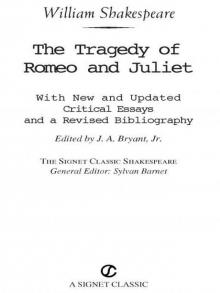 Romeo and Juliet
Romeo and Juliet As You Like It (Folger Shakespeare Library)
As You Like It (Folger Shakespeare Library)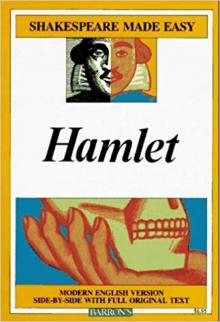 Hamlet
Hamlet Richard II (Folger Shakespeare Library)
Richard II (Folger Shakespeare Library)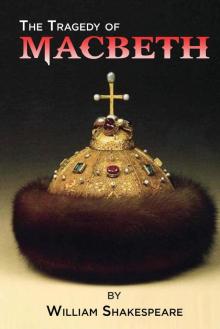 Macbeth
Macbeth Henry V
Henry V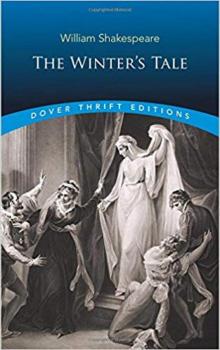 The Winter's Tale
The Winter's Tale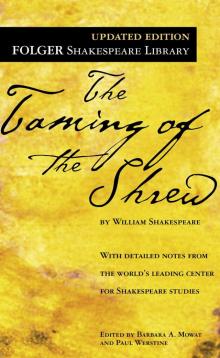 The Taming of the Shrew
The Taming of the Shrew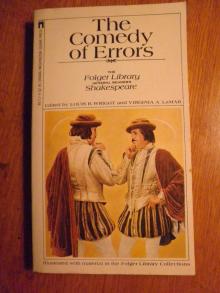 The Comedy of Errors
The Comedy of Errors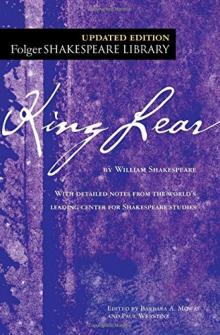 King Lear (Folger Shakespeare Library)
King Lear (Folger Shakespeare Library)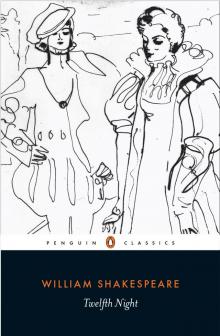 Twelfth Night
Twelfth Night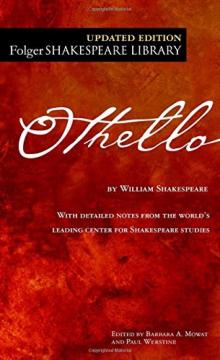 Othello
Othello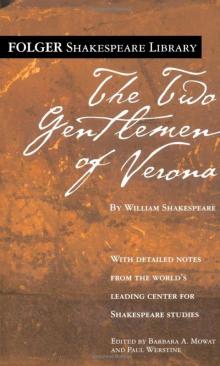 The Two Gentlemen of Verona
The Two Gentlemen of Verona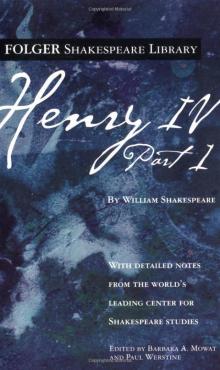 Henry IV, Part 1 (Folger Shakespeare Library)
Henry IV, Part 1 (Folger Shakespeare Library) King John/Henry VIII (Signet Classics)
King John/Henry VIII (Signet Classics)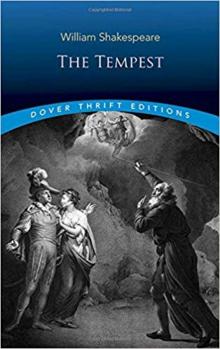 The Tempest
The Tempest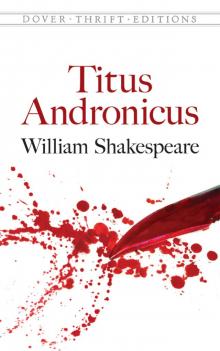 Titus Andronicus (Dover Publications)
Titus Andronicus (Dover Publications)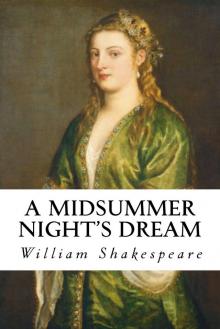 A Midsummer Night's Dream
A Midsummer Night's Dream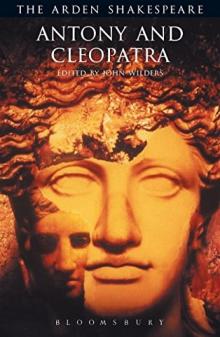 Antony and Cleopatra (Arden Shakespeare: Third Series)
Antony and Cleopatra (Arden Shakespeare: Third Series)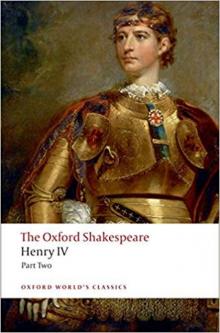 The Oxford Shakespeare: Henry IV, Part 2 (Oxford World's Classics)
The Oxford Shakespeare: Henry IV, Part 2 (Oxford World's Classics)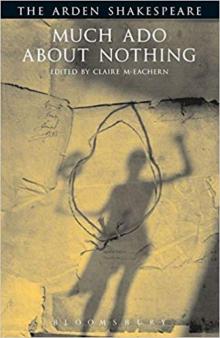 Much Ado About Nothing (Arden Shakespeare: Third Series)
Much Ado About Nothing (Arden Shakespeare: Third Series)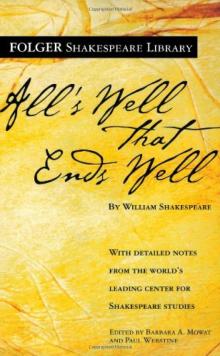 All's Well That Ends Well
All's Well That Ends Well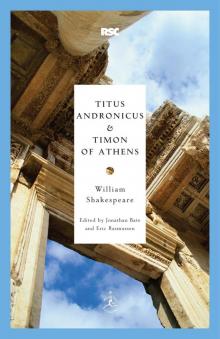 Titus Andronicus & Timon of Athens
Titus Andronicus & Timon of Athens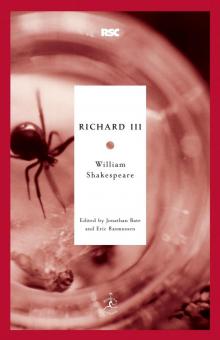 Richard III (Modern Library Classics)
Richard III (Modern Library Classics) Coriolanus
Coriolanus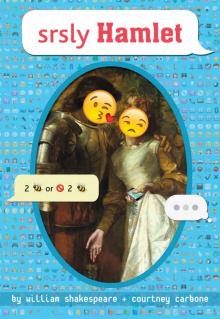 srsly Hamlet (OMG Shakespeare)
srsly Hamlet (OMG Shakespeare) The Merchant of Venice
The Merchant of Venice Richard III
Richard III Richard II
Richard II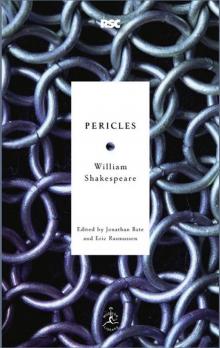 Pericles
Pericles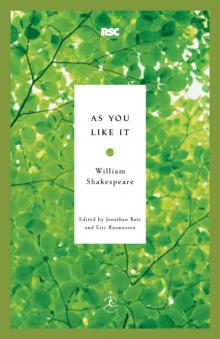 As You Like It
As You Like It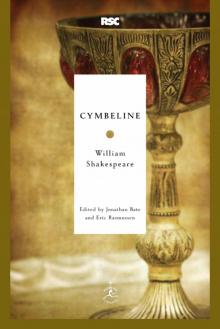 Cymbeline
Cymbeline Alls Wel that ends Well
Alls Wel that ends Well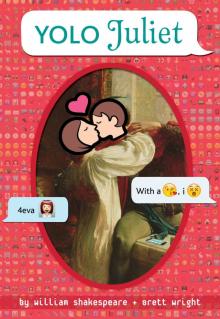 YOLO Juliet
YOLO Juliet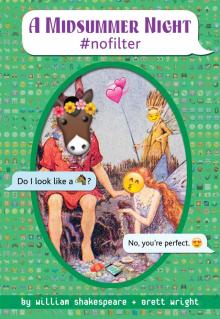 A Midsummer Night #nofilter
A Midsummer Night #nofilter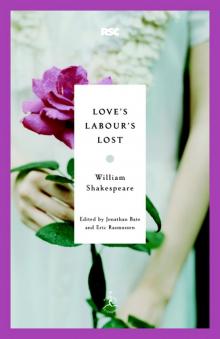 Love's Labour's Lost
Love's Labour's Lost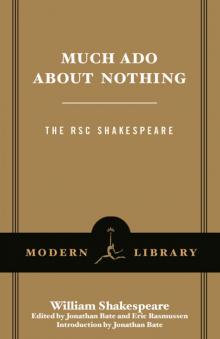 Much Ado About Nothing
Much Ado About Nothing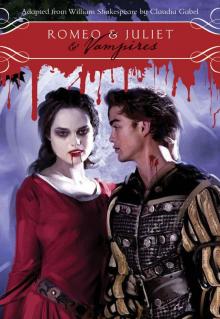 Romeo & Juliet & Vampires
Romeo & Juliet & Vampires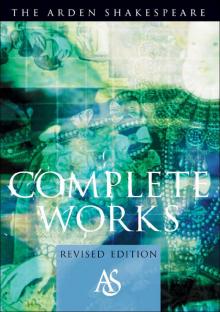 The Arden Shakespeare Complete Works
The Arden Shakespeare Complete Works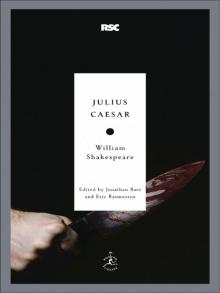 Julius Caesar
Julius Caesar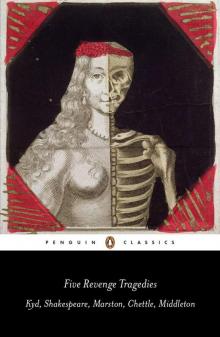 Five Revenge Tragedies: The Spanish Tragedy, Hamlet, Antonio's Revenge, The Tragedy of Hoffman, The Revenger's Tragedy (Penguin Classics)
Five Revenge Tragedies: The Spanish Tragedy, Hamlet, Antonio's Revenge, The Tragedy of Hoffman, The Revenger's Tragedy (Penguin Classics)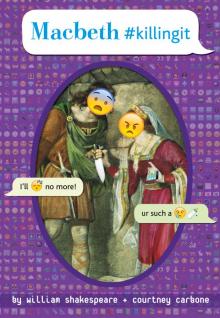 Macbeth #killingit
Macbeth #killingit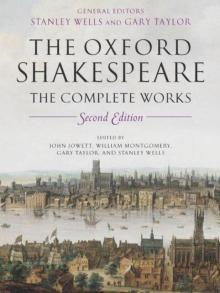 The Oxford Shakespeare: The Complete Works
The Oxford Shakespeare: The Complete Works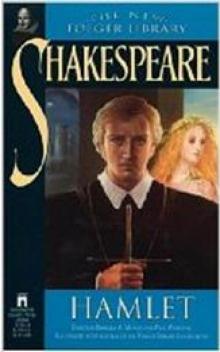 Hamlet, Prince of Denmark (Collins edition)
Hamlet, Prince of Denmark (Collins edition)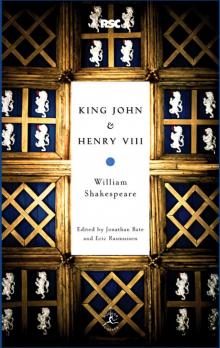 King John & Henry VIII
King John & Henry VIII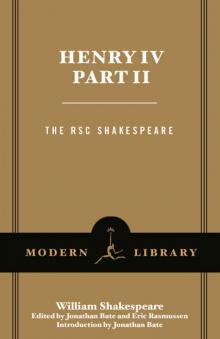 Henry IV, Part 2
Henry IV, Part 2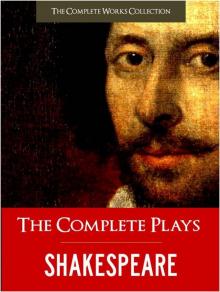 Complete Plays, The
Complete Plays, The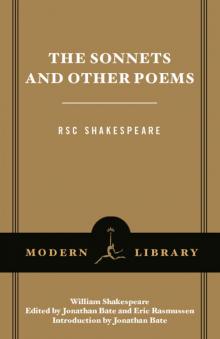 The Sonnets and Other Poems
The Sonnets and Other Poems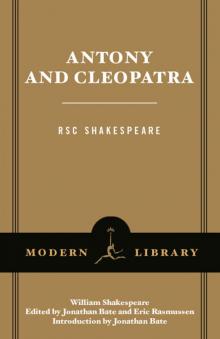 Antony and Cleopatra
Antony and Cleopatra Henry IV, Part 1
Henry IV, Part 1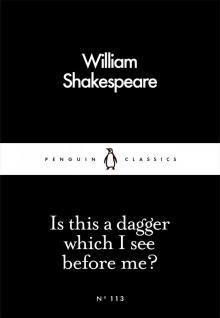 Is This a Dagger Which I See Before Me?
Is This a Dagger Which I See Before Me? The Complete Works of William Shakespeare In Plain and Simple English (Translated)
The Complete Works of William Shakespeare In Plain and Simple English (Translated)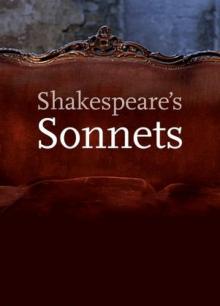 The Sonnets
The Sonnets